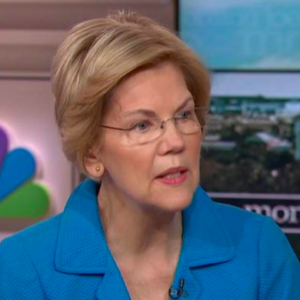Sen. Elizabeth Warren (D-Mass.) outlined her plan for rural America in a blog post on Medium, and announced she will prioritize municipal broadband networks, improve broadband maps, and create an Office of Broadband Access to distribute $85 billion in federal funds to ensure everyone has internet access, if she becomes president.
In the blog post, she slammed private internet service providers (ISPs) for underserving parts of rural America, blaming them for the digital divide and for contributing to the inaccuracy of the FCC’s broadband maps.
“Today’s biggest internet service providers (ISPs) have left large parts of the country unserved or dramatically underserved,” she wrote. “Not only that, they have deliberately restricted competition, kept prices high, and used their armies of lobbyists to convince state legislatures to ban municipalities from building their own public networks. Meanwhile, the federal government has shoveled billions of taxpayer dollars to private ISPs in an effort to expand broadband to remote areas, but those providers have done the bare minimum with these resources — offering internet speeds well below the FCC minimum.”
She also said only local municipalities, nonprofits, tribal organizations and state governments would be eligible for funds from her Office of Broadband Access.
“All grants will be used to build the fiber infrastructure necessary to bring high-speed broadband to unserved areas, underserved areas, or areas with minimal competition,” she wrote. “The federal government will pay 90 cents on the dollar for construction under these grants. In exchange, applicants will be required to offer high-speed public broadband directly to every home in their application area. Applicants will have to offer at least one plan with 100 Mbps/ 100 Mbps speeds and one discount internet plan for low-income customers with a prepaid feature or a low monthly rate.”
Warren’s plan treats broadband service like a public utility, similar to electrical power, which consumers receive via public and private companies or cooperatives, depending on where they live.
But experts and researchers don’t agree whether local government-run broadband networks serve as meaningful competition to the landed ISPs, notably Comcast, which operates as a monopoly in many cities and towns across the U.S.
The Electronic Frontier Foundation advocated for a “fiber for all” plan in March 2019, arguing that if the digital divide isn’t quickly addressed, rural Americans will be economically left behind.
“We need to push our elected officials and regulators for a fiber-for-all-people plan to ensure everyone can obtain the next generation of broadband access,” wrote the EFF’s Ernesto Falcon. “Otherwise, the next generation of applications and services won’t be usable in most of the United States (referring to 5G). If American policymakers do not remedy the failings in the U.S. market and actively pursue ways to drive fiber deployment with the goal of universal coverage, then a staggering number of Americans will miss out on the latest innovations that will occur on the Internet because it will be inaccessible or too expensive.”
The Taxpayers Protection Alliance (TPA) repeatedly argues that most municipal broadband ventures end up being too expensive and sink cities in debt and result in higher taxes for residents, a hypothesis supported by a 2017 University of Pennsylvania study.
The study found that out of 20 municipal broadband projects studied, 11 generated a negative cash flow.
“Unless operations improve substantially, these projects cannot continue to operate over the long haul, let alone cover the capital costs needed to establish operations,” study author Christopher Yoo, a professor of law and computer science at the University of Pennsylvania, wrote. “Of the others, five are projected to take more than 100 years to recover their costs, and two others are projected to take over 60 years. Only two are on track to break even, and one of those is based on a highly urban, business-oriented model that few other cities are likely to be able to replicate, and the other includes data from two years of stronger performance when it offered only DSL service. ”
In 2017, the TPA launched a website, the Broadband Boondoggles, which documents at least 215 municipal broadband failures and how much debt they incur, which can be anywhere from $20,000 to more than $100 million per failed network.
A 2017 Pew Research survey found that most Americans — regardless of political affiliation — believe local governments should be able to launch their own broadband networks if private networks aren’t good enough. However, a 2016 TPA poll found that 64 percent of Americans don’t want their local government to go into debt to build a municipal broadband network.
Often when these locally run broadband networks go out of business, Google buys the fiber networks, the most famous example being when Google purchased the city of Provo, Utah’s fiber network for $1, even though it was worth $39 million.
But some municipal broadband networks have succeeded. A 2018 Harvard study found that municipal broadband networks tend to offer lower prices to consumers as opposed to private ISPs, and a July 2019 study from PCMag found that six of the ten fastest ISPs in the U.S. are either run by local governments or run by public-private cooperatives.
The research suggests that some municipal broadband networks — if run responsibly — can succeed, while others may fail if the financial costs and risks aren’t properly evaluated by local municipalities.
The TPA took to Twitter to criticize Warren for a government-owned approach to broadband.
“Hi @ewarren, government-owned broadband networks don’t work,” the TPA account tweeted. “Check out munibroadbandfailures.com before making any more outlandish proposals you’ll regret.”
Will Rinehart, Director of Technology and Innovation at the American Action Forum, tweeted that “research on broadband subsidies is hardly conclusive. A study on the Ag Broadband Loan Program found ‘no evidence that loans received…have had a measurable positive impact on recipient communities.'”

